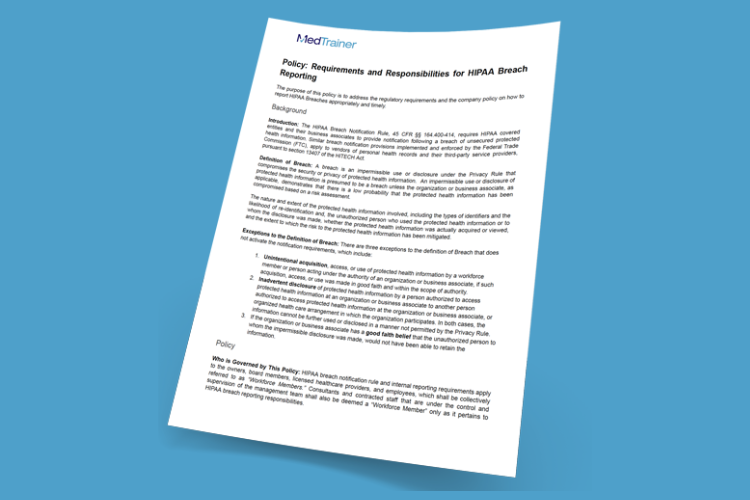In today’s data-driven world of healthcare, there are numerous advantages and disadvantages of sharing patient information. From quicker access to information, to better communication among specialists, to the peace of mind that comes with access, patient data sharing adds up to significant benefits for both patients and providers alike.
Yet, the ability to share patient data isn’t inherently beneficial. In fact, handled incorrectly, it could lead to significant disadvantages for patients and providers. Handling protected health information (PHI) takes forethought and a security-first mindset, and needs to always consider the needs of the patient above all else.
Let’s review some of the advantages and disadvantages of sharing patient information in a medical setting.
5 Benefits of Sharing Patient Information
Sharing patient information among healthcare providers can lead to better health outcomes, improved patient safety, and a more efficient healthcare system. However, it’s essential to balance the benefits of sharing patient information with the need to protect patient privacy and confidentiality.
1. Improved Coordination of Care
When different healthcare providers can access a patient’s medical records and treatment history, they can work together more effectively to develop a comprehensive, coordinated treatment plan. Collaboration between providers can lead to better health outcomes for the patient, as well as more efficient use of resources.
2. Faster and More Accurate Diagnosis
Sharing patient information among healthcare providers can help reduce the risk of misdiagnosis or delayed diagnosis. Speed is critical in emergencies, where quick access to medical information can affect the quality and delivery of care, and the confidence level at which it’s administered.
3. Reduced Medical Errors
By sharing patient information, healthcare providers can ensure they have a complete picture of a patient’s medical history, including any medication allergies or adverse reactions. A complete record reduces the risk of medical errors, such as prescribing the wrong medication or administering a treatment that could cause harm.
4. Improved Patient Safety
When healthcare providers are able to identify potential health risks and provide proactive interventions, patient safety is improved. For example, if a patient has a family history of a medical condition, their healthcare provider may recommend early screening or testing to detect potential issues.
5. Increased Efficiency
By accessing a patient’s entire medical history, healthcare providers can avoid duplicative tests and procedures, saving time and reducing costs. This can also free up resources to focus on providing patients with effective and personalized care.
Proper security and privacy measures must be in place to safeguard patient data and ensure that authorized individuals only access it for legitimate purposes.
5 Problems with Sharing Patient Information
While there are many benefits to sharing patient information among healthcare providers, there are also several potential disadvantages and drawbacks. Here are some of the key challenges:
1. Privacy and Security Concerns
Sharing patient information raises concerns about privacy and security. Patients may worry that unauthorized individuals will have access to sensitive health information or that it could be stolen or misused. To address these concerns, healthcare providers must adhere to the HIPAA Security, Breach, and Notification Rules to protect patient data by encrypting electronic records, implementing access controls, and establishing policies for sharing information only when necessary.
Download a free and ready-to-use HIPAA Breach Notification Policy.
2. Legal and Regulatory Challenges
Sharing patient information can also raise legal and regulatory challenges, particularly in cases spanning different healthcare organizations or state or national borders. Healthcare providers must comply with laws and regulations governing the collection, use, and disclosure of patient information in the United States, including HIPAA.
3. Interoperability and Data Quality
To share patient information effectively, it must be stored in a format easily accessible and understood by different healthcare providers. Proper storage can be challenging, as providers use differing electronic health record systems or have different data formatting standards. Accuracy and completeness of the information is an issue, particularly if it has been entered into the system by multiple providers.
4. Patient Stigma and Discrimination
Sometimes, sharing patient information could lead to stigma or discrimination, particularly for individuals with mental health conditions, substance use disorders, or certain infectious diseases. Patients may be reluctant to seek care or disclose sensitive information if they fear discrimination based on shared records.
5. Resistance to Change
Some healthcare providers may resist sharing patient information if they are accustomed to working in silos or have workflow concerns. Establishing new processes and procedures for sharing information takes time, and some providers may hesitate to adopt new technologies or approaches.
While sharing patient information can have many benefits, healthcare leadership must carefully consider and address these potential drawbacks to ensure patients’ privacy and security are protected, and that healthcare providers can work effectively and efficiently across boundaries.
5 Ways Compliance Training Improves Patient Information Safety
Compliance training is an essential tool for reducing instances of mistakes or breaches related to patient information. Here are a few key ways that compliance training can help:
1. Educating Healthcare Providers
The Office of Civil Rights (OCR) requires HIPAA-related training annually, but it is recommended that healthcare professionals take refresher, or microlearning, throughout the year. This training helps healthcare employees understand their obligations to protect patient privacy and security and the consequences of non-compliance. With this knowledge, providers can make informed decisions and take appropriate precautions to safeguard patient data.
See MedTrainer’s most popular courses.
2. Reinforcing Best Practices
Compliance training can also help reinforce best practices for handling patient information, such as using secure passwords, encrypting electronic records, and limiting access to patient data to those with a legitimate need to know. By reminding healthcare providers of these best practices, compliance training can help reduce the risk of mistakes or breaches related to patient information.
3. Providing Scenario-Based Training
Compliance training can include scenario-based training, where healthcare providers are presented with hypothetical situations related to patient information and asked to make decisions based on the applicable laws and regulations. This training can help healthcare providers develop critical thinking skills and make informed decisions when faced with real-world situations.
4. Emphasizing the Importance of Ethical Behavior
Compliance training can also emphasize the importance of ethical behavior when handling patient information. Healthcare providers can learn about the ethical principles that guide their profession, such as respect for patient autonomy and confidentiality. By emphasizing these principles, compliance training can help healthcare providers understand the ethical implications of their actions and make decisions that prioritize patient well-being.
5. Encouraging a Culture of Compliance
Compliance training encourages a culture of compliance within healthcare organizations. By demonstrating the importance of complying with laws and regulations related to patient information, healthcare providers can foster a culture where compliance is a shared responsibility and a crucial part of providing high-quality patient care.
Remaining Compliant When Sharing Patient Information
Using an enterprise-grade learning management system, such as MedTrainer, healthcare organizations simplifies compliance around the sharing of patient data. Built specifically for healthcare, MedTrainer offers a wide range of HIPAA-specific courses that employees can complete from anywhere, with the ability to stop and start as needed. They can even go back and review the courses throughout the year. With automatic tracking and customizable reporting, a course completion report is at your fingertips and it’s easy to track progress. Keep PHI-related policies and procedures at employees’ fingertips with full-cycle policy management.

